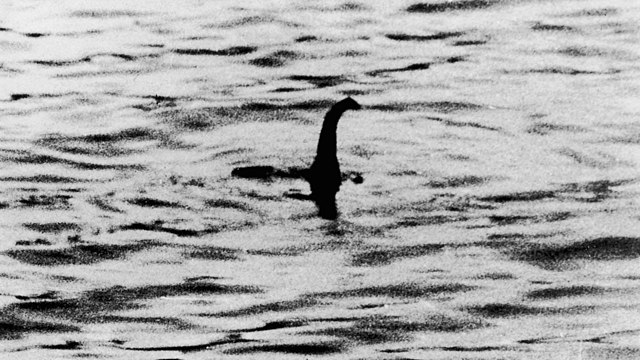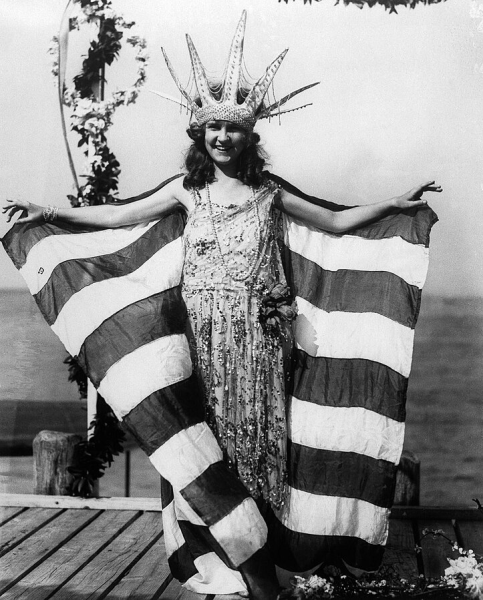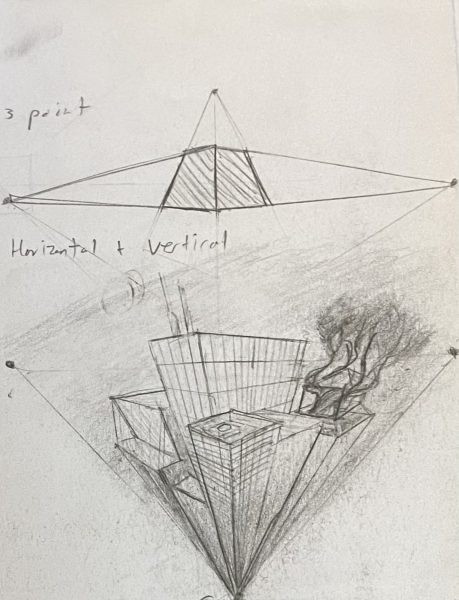A Dive Into Famous Folklore Monsters, or Cryptids, Their Origins, And If They Really Exist or Not
Bigfoot, Nessie, and Mothman, oh my!
Marmaduke A. Wetherell / Wikimedia Commons
The famous “Surgeon’s photo” of the Loch Ness monster, purportedly taken by Robert Kenneth Wilson in 1934 during a fishing trip north with his friend, Maurice Chambers. It is by far the most famous photo of Nessie, and helped to skyrocket the cryptid’s popularity after being sold to the Daily Mail in 1934 after popular sightings of Nessie in 1933. After Chambers passed away in 1994, personal papers revealed that the photograph was a hoax, having been taken by hunter and filmmaker Marmaduke Arundel Wetherell, having been a sculpture of wood and plastic made by sculptor Christian Spurling that was attached to a toy submarine. Spurling corroborated the story at the age of 90 in 1993, with the group deciding to have Wilson be the one to put the photo forth to lend credibility to the story as he was a physician. In spite of its proven falsehood, the Surgeon’s photo is still what many first think of when they hear of the Loch Ness monster — and could you blame them? The hoax went on for over 60 years, only definitively ruled out because of testimony by its producers. The lighting allows the centered figure to remain obscure, yet establishes an iconic silhouette that many recognize. There is no scale to be given by anything surrounding the subject, so we cannot gauge size, creating more ambiguity. While color photography did exist in the form of Autochrome, it was rare, and thus understandable that Wilson, just going on a fishing trip, would not have it on his person, with the black and white coloring further obscuring detail and amassing any seams on the sculpture into a single silhouette.
Cryptids — we have all heard of them, even if we do not know them by that name. Cryptids are, as the name implies, cryptic creatures, monsters whose existence is, at best, in contention, with the most solid accounts typically being those found in rumor and folklore. You could view them as modern day mythical creatures. The study of cryptids is known as “cryptozoology,” and the founders of this science are typically acknowledged as Bernard Heuvelmans and Ivan Sanderson. However, to call it a science is somewhat of a stretch, as instead of being an intersection of Zoology and Folkloristics, Cryptozoology is instead a pseudoscience on par with UFO-logy. Despite the pseudoscientific nature of the field, it still holds an important facet of knowledge. By studying the rumors and myths of a culture, our knowledge of those cultures will strengthen. We can see the impacts that culture has on the rumors it begets and vice-versa, similarly to any other medium of storytelling. If nothing else, it is fun to look into these rumors and mysteries even if we do not believe in them. As it is one of the most famous cryptics, why not start with an analysis of the Loch Ness Monster?
The Loch Ness monster has been reported for centuries, though not always in the same form. The earliest report dates back to 565 C.E. An Irish monk named Saint Colombia was exploring by the river Ness and heard rumors of a “water beast.” On confrontation, the beast was kept at bay from Colombia’s men upon being presented with a cross. While there were sparse reports through the ages, the popularization of The Loch Ness monster came as sightings rose greatly in 1933, with the famous “surgeon’s photo” taken in 1934, seen to the right. The Loch Ness monster was affectionately dubbed Nessie in the 1940s after the plesiosaur, an extinct aquatic reptile that bore a striking resemblance to the surgeon’s photo and other depictions of Nessie, given its long neck and four fins.
That form, though, has not been the one regularly attributed to the creature of the Loch Ness. The report of Saint Colombia describes it solely as a water beast in the river Ness, not the colloquially common creature of a plesiosaur in the loch. In fact, many early reports do not cite a creature in the loch as anything similar to a reptile, with a published purported sighting in 1879 described it as a water horse.
Water horses refer to a number of mythical creatures most often in the British Isles, most commonly, the kelpie. Scottish folklore specifically places the water horses in a loch, where these creatures would typically coax people into riding them, then promptly drown and devour them in the body of water. Roland Watson’s The Water Horses of the Loch Ness found the Ness was the loch most often described as being inhabited by kelpies and water bulls, which are other mythical beasts.
The image of Nessie as a plesiosaur was popularized in the 1930s, and almost every subsequent reporting of a creature in the loch Ness has been made to this new form. In fact, this new, regularly reported form was based on a fake, as the surgeon photo was an admitted fraud.
That said, just because that photo was a fake, does not mean that the creature’s existence was faked. Many cryptids do not have the benefit of a photo in the first place, yet many still believe in them, such as the Mothman. An article published November 16th, 1966 in the Point Pleasant Register, a local newspaper in West Virginia, detailed an account of two young couples who encountered a massive winged man near a former World War II munitions plant. The moniker “Mothman” was coined by an anonymous Ohio copy editor, and is believed to be named after the popular Batman TV series at the time. The sightings from 1966-1967 are believed to be over 100 according to folklorist Jan Harold Brunvand, and they boil down to a basic, repeated description. Placed around seven feet tall and with the initial report identifying the wingspan as ten feet long, Mothman was an imposing creature, to say nothing of its eerie reflective or even glowing red eyes. Brunvard reported some accounts of it attacking cars, and a Faye Dewitt-Leport reported it as squatting on her car, staring into it with massive red eyes, before suddenly flying away. There was even a hunt held to find the Mothman, though it yielded no results.
Many critics claim that it was likely just a sandhill crane out of its migration route, as they are roughly as tall as a man with seven feet of wingspan and red coloring around the eyes. Others attempt to push the paranormal claim by saying that Mothman was an owl, heron, or even a weather balloon, and that the sightings were heightened by hoaxes from construction workers or teenagers. Believers in the myth, however, tie the Mothman to UFO sightings, or claim that it was anything from an alien to a supernatural manifestation, from military red-water-seep from the TNT area to an unknown species of animal. Ultimately, there is no solid reasoning for where the Mothman originated. The sheer popularity of Mothman has also been attributed to mass hysteria, as within the close-knit community of West Virginia, most people knew or knew of somebody who had a Mothman story, thus leading to the rumor growing larger and larger.
These sightings came to a sudden and somber halt at 5 P.M. on December 15, 1967, when the U.S. Highway 35 bridge, America’s first aluminum painted bridge, suddenly collapsed and killed 46 people as it fell into the Ohio river. Some eyewitnesses claim they saw Mothman there days before the fall, and others believed Mothman’s initial appearance exactly 13 months earlier served a poor portent of disaster. That would explain why there would be no appearances after the collapse, though I doubt that anyone would want to hear of some rumored mystical creature after such an incident.
Mothman’s rise to popularity started in 1970 when it was covered by Gray Barker, an author best known for works on paranormal and UFO claims, regardless of his belief in them. Released in 1975, John Keel’s The Mothman Prophecies was another popular novel that spread the Mothman Myth nationally, and had a subsequent movie adaptation in 2002.
While these forces intensified Mothman’s media coverage, with it later being tied to other disasters, Mothman also saw success in Point Pleasant, New Jersey. While most people do not believe in Mothman locally, there has been an annual Mothman festival since 2002. It was initially held as a creative and unique way to drum up tourism, which celebrates much of the local legacy of both Mothman and Point Pleasant the third weekend of every September. The Mothman Museum and Research Center was opened in 2005, and a 12-foot metal statue was crafted by sculpture Bob Roach in 2003.
Of course, you cannot discuss popular cryptids without discussing Bigfoot. Sightings range throughout North America, though are most concentrated in the Pacific Northwest in the United States and Canada, with the latter dubbing the creature “Sasquatch” interchangeably.
The name “Bigfoot” originated in 1958, when a logging company found massive human-like footprints in the mud of a National Forest, which appeared after massive oil drums were moved without explanation. Bigfoot was something of a boogeyman to the workers, and while they assumed it was a prank at first, it eventually got serious enough that they contacted a reporter. Andrew Genzoli of Humboldt Times published an article on October 6th, 1958 detailing the worker’s story, and from that article, the rumor spread like wildfire. However, believers in Bigfoot believe that the history goes back much further.
Bigfoot believers point to 1000 to 500 year old petroglyphs in the Tule River Reservation as depicting a family of Bigfoots, with the largest glyph being called “Hairy Man.” Many other Native American cultures have their own, similar tales, which believers hold as evidence of something being out there. Many critics view them as yet another human-like giant tale, with the variant spread through North America specifically being a wild, hairy giant. There is an unnerving similarity between the tales and the accounts of Bigfoot, however. In the July 16th issue of The Oregonian in 1924, a violent encounter between miners and a group of “ape-men” was described, and even President Theodore Roosevelt wrote a second-hand story of a foul smelling bipedal creature ransacking an explorer’s camp and killing his companion, with Roosevelt noting the fear of the man when he retold the tale.
Unlike the photos of Nessie and the sketches of Mothman, Bigfoot’s most famous form of evidence is in the form of a video, the Patterson-Gimlin film shot in 1967 in Northern California. The location was identified in 2011 as Buff Creek, 25 miles northwest of Orleans, California. The 59.5 second reel was filmed by Roger Patterson and Robert Gimlin, hence the name Patterson-Gimlin. It is a dividing feature amongst claims of Bigfoot’s existence, as it will either be inexcusable proof, or yet another hoax. Patterson maintained that the film was real his entire life, while Gimlin has denied being involved in any part of a hoax, though in a 1999 telephone interview, seemed to have some suspicions of a hoax being played by Patterson. In 2002, Philip Morris claimed that he made a gorilla costume used in the film, receiving a mail order in 1967, believing it to be used in some sort of prank. With his technical expertise as a costume maker, he offers an explanation of the strange movements in the Patterson-Gimlin film. Bob Heironimus claims to have been the figure in the film, with his relatives and friends backing up as seeing the suit or saying that he revealed the hoax much earlier in private.
The strongest case against the cryptic is that the only apes in the Americas, so called “New World monkeys,” are all small to medium sized, from the smallest monkey in the world at the pygmy marmoset, to the southern muriqui, which weighs at most 33 pounds. This is to say nothing of the fact that all of them are found in Mexico and further south, not anywhere near Humboldt County, California.
But what if there was another ape that had migrated which we had not yet identified? Gigantopithecus is pointed to most frequently as a possibility, with fossilized mandibles and teeth found in Asia, leading some to believe it may have migrated across the Bering land bridge. As unlikely as that theory may be, very little proves more random than reality.
Sam Mitchell, a believer in bigfoot, is all but an expert on the matter. Mitchell provided many examples of evidence that could lend credence to the creature’s existence. Most of the sightings occur in the Pacific Northwest, and according to Mitchell, this leaves plenty of space in which Bigfoot can roam. Mitchell said, “such a vast amount of North America is unexplored, particularly the Pacific Northwest, making plenty of room for them to hide undetected and make evidence of their presence minimal” to people. Mitchell believes that Bigfoot exists as a species, rather than one, supernatural entity. He said,“it’s impossible for there to be just one, as they’ve been seen all over the country, and they’re living beings, so they’re not immortal. Many species tend to have just a single offspring, and especially when the elements in which they live are unforgiving, could create a high infant mortality rate, leading to a small, but historically consistent population.” Mitchell lives in Vermont, hunts regularly, and can apply that ecological perspective that many lack to prove the existence of Bigfoot. “We never find bodies because when wild animals die, they are quickly consumed by scavengers, and predators tend to go lay up and die somewhere secretive and secluded, somewhere where they feel safe. They are omnivores, so I’m sure they would have no trouble sustaining themselves,” Mitchell said.
Regardless of your belief in these and other cryptids, they are nonetheless interesting tales, and can hold secrets of the cultures that created them. Alex Gallagher, ‘21, said that “I believe that cryptids are cultural figures derived from communities coping with unexplainable occurrences and events, which is not to explicitly say that they aren’t real, but rather that there isn’t solid proof of their existence, so it’s more a matter of belief and folklore.” Cryptids may just be a more modern phenomena of myths, and through that lens we can see how information spreads and develops in the modern world, and reveal ideas about our own cultures and those in which they originated.
Regardless of your belief in these and other cryptids, they are nonetheless interesting tales, and can hold secrets of the cultures that created them.
Scott Ernsberger is a Managing Editor/Advisory Editor for ‘The Science Survey.' As a Managing Editor, Scott helps with copy-editing and keeping deadlines,...











